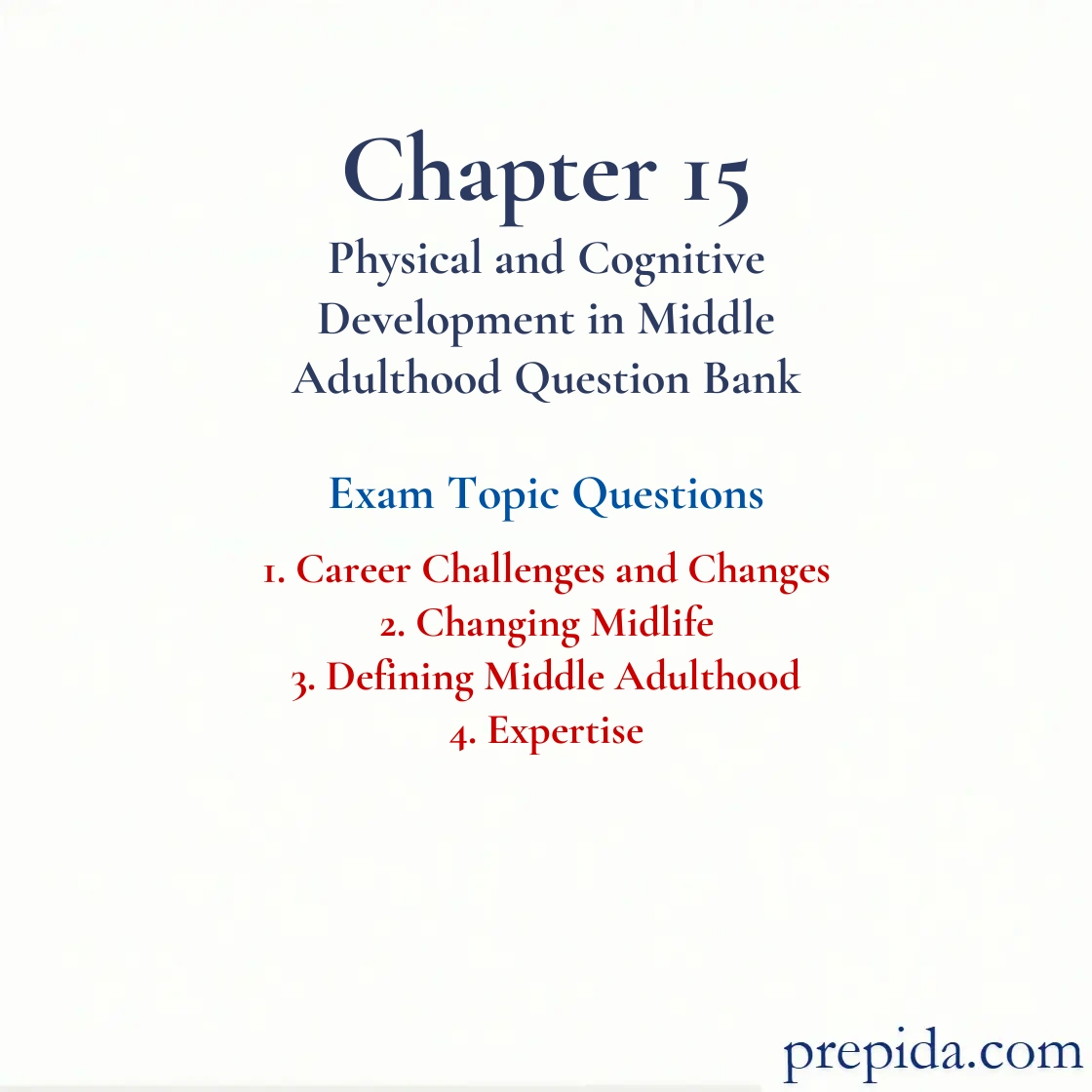
Which of the following is one of the outcomes of the restructuring, downsizing, and outsourcing resulting from globalization?
- offering incentives to middle-aged employees to retire early
- encouraging middle-aged professionals to take up entrepreneurship
- offering incentives to young professionals to outperform middle-aged employees
- hiring more middle-aged professionals to supervisory and managerial positions
Which of the following is one of the reasons why many middle-aged workers are delaying their retirement plans?
- the increase of retirement age to 75 years
- the increasing opportunity for middle-aged professionals
- the increased productive health owing to medical advancements
- the decline in defined-benefit pensions
Which of the following is a consistent finding regarding age identity?
- As adults become older, their age identity is younger than their chronological age.
- Most adults feel that their age identity is five years more than their chronological age.
- The age identity of adults is directly proportional to their chronological age.
- Most adults feel that their age identity is much older than their chronological age.
Ageism: Prejudice against others because of their age, especially prejudice against older adults.
Questions such as, "To which age group do you belong?" and "How old do you feel?" reflect the concept of
- mental age.
- age identity.
- chronological age.
- age stereotype.
Gender Identity: The sense of being male or female, which most children acquire by the time they are 3 years old.
Which of the following statements is true of the trends in midlife?
- Middle age is starting earlier and is shorter for increasing numbers of active and healthy people.
- The U.S. Census Bureau of 2018 indicates that 15 percent of the U.S. population is older than 65.
- Compared with previous decades and centuries, a decreasing percentage of the population is made up of middle-aged and older adults.
- As medical discoveries are slowing down the aging process, the boundaries of middle age are being pushed downward.
Ageism: Prejudice against others because of their age, especially prejudice against older adults.
In Patricia Cohen's analysis, which of the following has fueled the emergence of thinking about middle age?
- more people entering adolescence earlier than in the past
- increased pressure to remain in the workforce and delay retirement
- advances in health and more people living to older ages
- the decrease of life expectancy
Life Expectancy: The number of years that will probably be lived by the average person born in a particular year.
________ adulthood is the developmental period that begins at approximately 40 to 45 years of age and extends to about 60 to 65 years of age.
- Late
- Middle
- Early
- Emerging
Middle Adulthood: The developmental period that begins at approximately 40 to 45 years of age and extends to about 60 to 65 years of age.
Compared with earlier and later periods, middle age is influenced most by ________ and biological factors.
- sociocultural
- humanistic
- psychodynamic
- neurological
Cross-Cultural Studies: Comparison of one culture with one or more other cultures. These provide information about the degree to which development is similar, or universal, across cultures, and the degree to which it is culture-specific.
Many experts on middle adulthood describe the age period of 55 to 65 as
- late adulthood.
- early midlife.
- late midlife.
- early adulthood.
Middle Adulthood: The developmental period that begins at approximately 40 to 45 years of age and extends to about 60 to 65 years of age.
Which of the following statements is true of late midlife?
- Compared with earlier midlife, late midlife is more likely to be characterized by the preparation for retirement.
- Compared with earlier midlife, late midlife is less likely to be characterized by the death of a parent.
- People in this age range seldom have health problems.
- For most people in late midlife, the number of gains outnumber losses.
Climacteric: The midlife transition during which fertility declines.
Compared with middle age, which of the following best describes late middle age for many individuals?
- Health problems start to decline.
- Losses may begin to outnumber gains.
- Life changes decrease; the path is relatively fixed.
- Losses and gains even out.
Which of the following statements is true of novices and experts?
- Novices are more creative in solving problems than experts.
- Novices are more flexible in solving problems than experts.
- Experts avoid the use of strategies and shortcuts when solving problems.
- Experts process information more automatically than novices.
Information-Processing Theory: Emphasizes that individuals manipulate information, monitor it, and strategize about it. Central to this theory are the processes of memory and thinking.